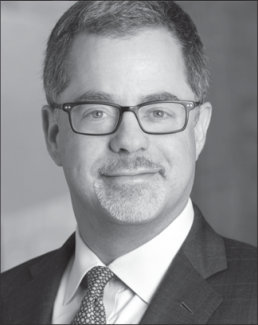Environmental Lawyers Pay Close Attention to Trump v. California

Justice Louis Brandeis famously remarked, “It is one of the happy incidents of the federal system that a single courageous state may, if its citizens choose, serve as a laboratory; and try novel social and economic experiments without risk to the rest of the country.” That maxim rings as true today as it did in 1932. Nowhere is this more evident than in the tug of war underway between the Trump administration and California. More than ever, environmental practitioners focused on the national stage must stay attuned to developments in the Golden State, and vice versa.
As Trump pursues a deregulatory agenda, California has rushed to fill the void. For example, as EPA reconsiders the Obama-era Clean Power Plan, California announced a suite of state-level measures to achieve its own goal of reducing greenhouse gas emissions to 40 percent below 1990 levels by the year 2030. Among other things, California extended authorization for its cap-and-trade program through 2030, and Governor Jerry Brown has been advocating linking its trading system, and expanding the western electricity grid, to other states. California Air Resources Board Chairwoman Mary Nichols has touted these initiatives as a direct response to the CPP’s withdrawal.
The most notorious example of this phenomenon may be SB 49, the “anti-backsliding” bill, which garnered significant attention, but remains stalled. SB 49 would prohibit a state or local agency from revising its rules to be less stringent than federal environmental “baseline standards,” which are defined as those standards that were in effect before Trump took office. In the event of a federal retreat from that baseline, SB 49 would require California agencies to quickly pass “emergency regulations” without the usual notice and environmental review processes.
California has also sought to compensate for the absence of U.S. leadership internationally. President Trump’s decision to withdraw from the Paris Agreement cannot go into effect until November 2020 at the earliest. But Brown and the governors of 13 other states and Puerto Rico were not inclined to wait, instead forming the U.S. Climate Alliance. The Climate Alliance members, which represent approximately a third of the U.S. population and 22 percent of its aggregate GHG emissions, have each pledged to meet the same reduction goal that the U.S. submitted in Paris. Brown attended the latest climate talks in Bonn, along with key members of the California legislature, and has pledged to pursue climate partnerships with Canada, Mexico, and China.
Practitioners with clients operating in multiple jurisdictions may find themselves navigating a patchwork quilt of state-level regulation. In some cases — as in the field of consumer disclosure and product labeling — “California is not only reacting to national developments, but driving them,” points out Anthony Samson, who heads Arnold & Porter’s government affairs shop in Sacramento. California is the only state with a law requiring disclosure of ingredients for household cleaning products, but “the California consumer products market is so massive that most manufacturers follow its lead for all of its products rather than sell products specifically labeled for California commerce.”
California Attorney General Xavier Bacerra has also jumped into the fray. A study by the Sacramento Bee shows that he has filed 24 lawsuits challenging the Trump administration in 17 subject areas, including multiple actions to forestall regulatory rollbacks at EPA, Interior, and Energy.
Practitioners will also be closely following developments in the area of automobile fuel economy standards. EPA and the National Highway Traffic Safety Administration are considering whether to revisit Obama-era GHG emissions and fuel-economy standards that were originally projected to achieve an industry fleet-wide average of 54.5 miles per gallon for cars and light trucks by model year 2025. California, however, has determined to maintain its standards under a special preemption waiver granted by EPA. To the extent state and federal standards diverge, cooperative federalism may be put to the test, as new questions could be raised concerning the waiver and preemption.
Meanwhile, in perhaps the boldest move to date, California legislators have proposed the Clean Cars 2040 Act, which would require all new cars registered in the state after that date to be zero-emission vehicles.
Tanya DeRivi, director of government affairs for the Southern California Public Power Authority, neatly sums it up: “Our organization has long followed federal and California legal and policy developments on environmental, energy, and tax issues,” she says. “But it has become even more important for our organization to understand the intersection between the two so we can better offer guidance to our members amidst the Trump-California legal and policy battles.” Where will those battles lead? Stay tuned.
Environmental lawyers pay close attention to Trump v. California.